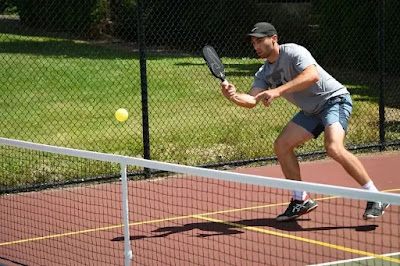Wakesurfing Tips on How to Get Started
Wakesurfing Tips on How to Get Started
Wakesurfing is a fun and exciting water sport that allows you to ride and enjoy your own wave without worrying about other surfers. You don't need to compete with other surfers for space or wait for your turn. The wave is all yours! And the best part? You can ride it for as long as you want, as long as you practice responsible wakesurfing.
 |
| Wakesurfing tips |
How to Wakesurf
If you're interested in wakesurfing, here are the steps you can follow:
1. Find the Right Boat
Look for a wake boat designed to create enormous wakes. This type of boat will give you the best wakesurfing experience.
2. Choose the Right Board
There are beginner-friendly wakesurf boards available in the market. Look for one that fits your skill level and experience.
3, Get a Wakesurf-Specific Rope
A wake-surf rope is shorter and thicker than a wakeboarding rope. It lets you stay closer to the boat and ride the wake easily.
4. Understand Your Boat's Ballast System
Ballast is a system that adds weight to the boat to create bigger wakes. Ensure you understand your boat's ballast system to get the best wakesurfing experience.
5. Keep the Speed at Around 10 MPH
The ideal speed for wakesurfing is around 10 mph. Make sure your driver keeps the boat at a consistent speed.
6. Lay Back in the Water
Lie back in the water with your feet resting loosely on the board. Make sure you're comfortable before you start.
7. Pop the Board Up
Dig your heels into the board and pop it up vertically. This will help you get on the board and start riding the wave.
8. Keep Your Feet Shoulder Width Apart
Once you're up, keep your feet shoulder-width apart. Your back foot should be anywhere from 6 to 18 inches from the board's tail. This will help you maintain balance and control.
Remember always to practice responsible wakesurfing and follow safety guidelines. Have fun, and enjoy your wave!
How to Wakesurf responsibly
Wakesurfing is a thrilling and enjoyable water activity, but being mindful of your surroundings and your impact on others is essential. Following these simple tips, you can wakesurf responsibly and have a great time on the water.
Minimize Repetitive Passes
It's tempting to keep riding in the same spot, but repetitive passes can cause damage to the shoreline and docks. After a few passes, take a break and move to a new location. By doing so, you'll prevent any unwanted disturbance and respect the space of others.
Keep Music at a Responsible Level
Marine audio systems are louder and better than ever, but it's important to consider your surroundings. Avoid blasting music in the early mornings or late evenings, and be aware of homeowners who might prefer peace. Follow the #CaptainsEtiquette and #WakeResponsibly by keeping the music at a responsible level.
Stay 200 Feet Away from Shore
Operating your boat at least 200 feet away from the shoreline helps to minimize any adverse effects on the shore. It also ensures that boat wakes and waves are optimized in deeper water. By staying away from the shore and minimizing repetitive passes, you can enjoy your wake surfing experience without causing any harm.
Remember, wakesurfing is important for the environment and the safety and enjoyment of others. So, remember these tips and have a great time on the water!
Find Right Boat for Wakesurfing
Wakesurfing is a popular water sport that has gained traction in recent years. It originated as an offshoot of wakeboarding, with people using wakeboarding boats to surf. However, as the popularity of wakesurfing grew, tow boat manufacturers began to design boats specifically for this sport by increasing the wakes to new heights.
Why is wake-surfing becoming so popular? The reason is that it is a safer option compared to water skiing or wakeboarding. Wakesurfing is done at much lower speeds and does not involve attaching your feet to the board with bindings. This means that if you fall, the board won't catch under the water and potentially cause injuries to your legs.
Modern tow boats come equipped with various features that enhance the wakesurfing experience. They have touch-screen electronics that control the wake-tuning systems, allowing you to store rider preferences and settings. This means you can make subtle changes based on the conditions of the day you're riding.
In recent years, sterndrive manufacturers have also started to offer wake-surfing models. These boats feature a unique innovation called the Forward Drive, which has dual, counterrotating propellers in front of the gearcase rather than in the rear. This keeps the propellers away from the rider, much closer to the boat in wake-surfing than in skiing or wakeboarding.
When choosing a boat for wakesurfing, look for one with features that will enhance your experience and keep you safe. The right boat will make all the difference in your enjoyment of this thrilling sport.
Choose the Right Gear for Wakesurfing
Wakesurfing is an exciting and challenging water sport requiring the right gear to start. Whether you're a beginner or an experienced rider, selecting the proper equipment can make all the difference in your performance and safety on the water. In this article, we'll cover the three essential pieces of gear you need to get started: the board, the rope, and the personal flotation device (PFD).
Choosing the Right Board:
The board is the most critical piece of equipment for wakesurfing. If you're new to the sport, it's important to seek out "beginner boards." These boards are designed to be more stable and easier for inexperienced riders. Conversely, more advanced models are geared towards accomplished riders, making learning challenging for newbies. While the physical differences between beginner and advanced boards may be subtle, they can significantly affect how the board handles a rider.
Selecting the Right Rope:
The rope you choose is also important when wakesurfing. A wake-surfing rope is different from a wakeboarding rope or a ski rope. Wakesurfing ropes are typically shorter and thicker than other types of ropes, with a heavily padded handle. Some ropes even have knots that help new riders pull themselves into the wave's "sweet spot," where the wave has the most power and push.
Picking a Personal Flotation Device or life jacket:
Finally, you'll need a personal flotation device (PFD) or life jacket. PFDs are essential for safety when wakesurfing. They provide buoyancy in the water and help keep you afloat if you fall. Modern PFDs are designed to look and feel more like down vests than bulky foam pieces. Choosing a bright-colored PFD is helpful to make it easier to spot downed riders.
In summary, having the right gear is essential for getting started in wake surfing. Choosing the right board, rope, and PFD can help you have a safe and enjoyable experience on the water, regardless of your skill level.
How to Start Wakesurfing
Wakesurfing is a water sport that is easier on the body and less complicated than skiing or wakeboarding, making it an ideal activity for older riders. With a little experience in skiing or wakeboarding, you can quickly learn wakesurfing with the right gear and technique.
Getting Started
First, put on a personal flotation device (PFD) and position your feet on the wake surfing board. Place your back foot over the tail and your front foot in the middle of the board, with 18 inches distance between them. Point the board toward the side of the boat you want to surf on. Left-foot forward riders go to the port side, and right-foot forward riders go to starboard.
The Driver's Role
Once ready, signal the driver to add throttle slowly. As the boat starts to pull you, dig your heels into the board and let the boat do the work to pull you up. Stand up slowly as the board's tail starts to get on the plane. The wave will provide a lot of push, but it takes practice to drop the handle and find the sweet spot on the wave, usually just ahead of the "break."
Adjustments
If the wake is too steep, add more ballast weight to the front. If there isn't enough push, add ballast weight to the stern. The ideal boat speed range is between 10 to 14 MPH.
Riding and Turning
To turn, apply pressure on your heel or toes, especially your big toe. The board responds readily, so be smooth about it. Put more weight on your front foot to speed up, and to slow down, add more weight to the rear foot.
Practice Makes Perfect
Wakesurfing is a fun activity, and the best part is that practicing is enjoyable. You can ride with better riders who can give you pointers while on the water. Since wake surfing is done close to the boat, you can hear them clearly and put their advice to immediate use. The wave is yours for as long as you want to ride it, so take your time, enjoy the experience, and practice as much as possible.





